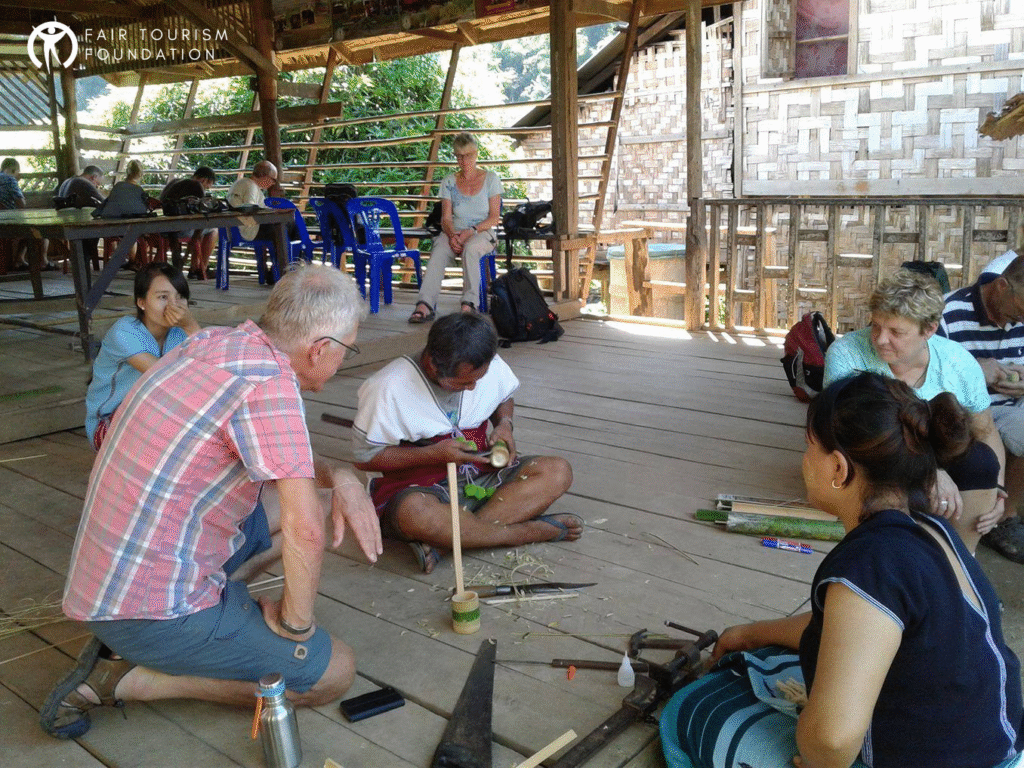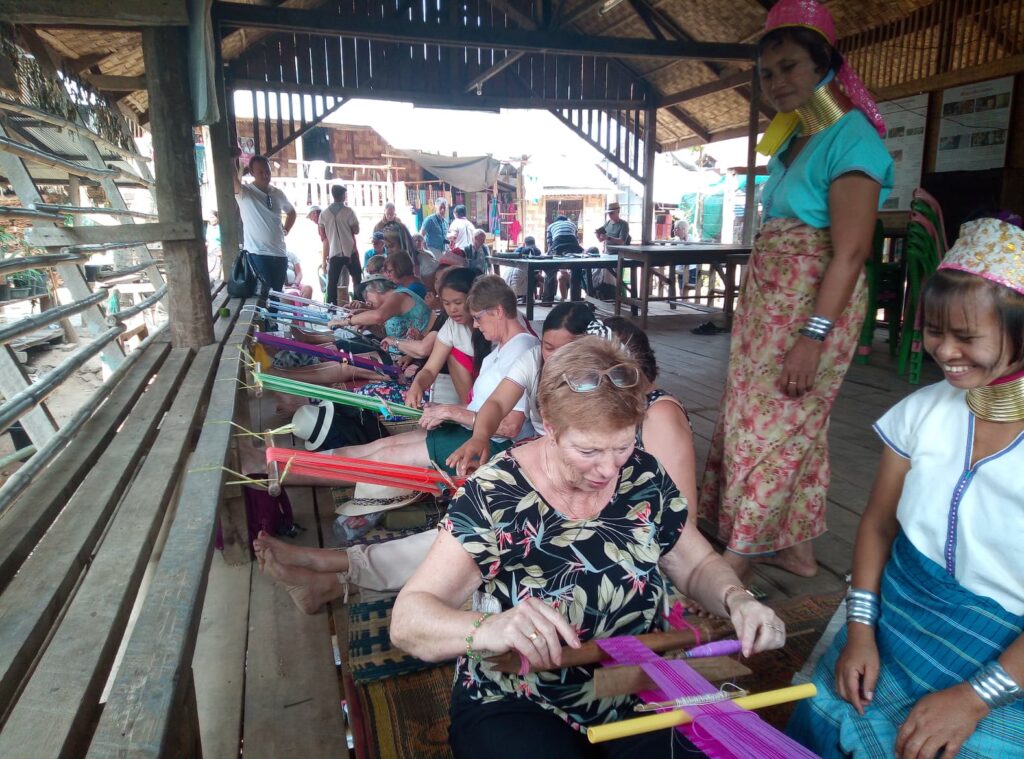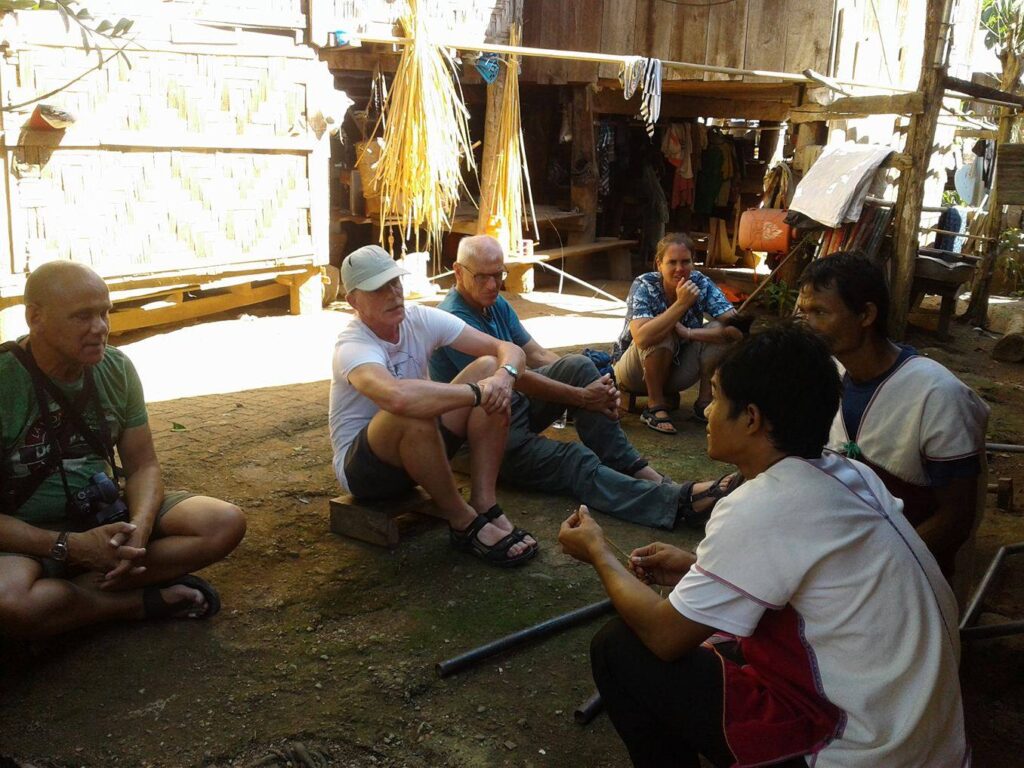Author: Iiris Hämäläinen

Many travelers are now asking: what is community-based tourism? To put it shortly, the meaning of community-based tourism (CBT) is about local communities owning and leading tourism initiatives. It gives communities the power to shape how they engage with visitors, aiming to create sustainable income opportunities while reducing reliance on outside tour operators. This responsible tourism practice is a tool of cultural and environmental preservation: visitors are invited not to just observe but to engage respectfully with the community’s daily life, traditions, and nature.
Common Misconceptions About Community-Based Tourism (CBT)
As interest in ethical and sustainable tourism continues to grow, community-based tourism has also gained a place in the global spotlight. However, the more attention CBT gets, the more misunderstandings seem to follow. This risks undermining the value and success of the entire practice, making it important to challenge the myths surrounding community-based tourism.
Misconception 1: CBT is just charity tourism
TRUTH: Community-based tourism is not about tourists “saving” or “helping” local communities. No one is rescuing anyone, and there’s no such dynamic as outsiders giving and locals receiving. Rather, effective CBT is built on equal partnership and exchange, where both guests and hosts learn from each other and contribute to a shared vision. A great community-based tourism example is Fair Tourism’s initiative in Thailand, where the local communities now guide tours, offer homestays and workshops, and host cultural experiences. The Kayan have become the leaders and owners of the tourism taking place in their region.

WHY IS THIS MISCONCEPTION A PROBLEM? Viewing community-based tourism as charity disempowers communities by overshadowing their agency and expertise. This risks:
- Framing local people as passive beneficiaries rather than active professionals
- Attracting the wrong kind of travellers, who seek to “give back” rather than actively participate
- Shifting the focus away from collaboration
Misconception 2: CBT is limited to isolated communities
TRUTH: Community-based tourism is not limited to remote villages or rural regions. It is also thriving in cities and urban areas around the world, referred to as community-based urban tourism (CBUT). What defines community-based tourism isn’t the location, but who owns, manages, and benefits from the experience. Whether it’s a guided street art tour led by local youth in a busy capital or a culinary walk run by a neighbourhood cooperative, CBT can flourish wherever locals take the lead. It’s about local control and shared benefit, not geographic isolation.
WHY IS THIS MISCONCEPTION A PROBLEM? Limiting community-based tourism to remote destinations implies that only “exotic” or “undeveloped” communities need CBT. This is harmful as it:
- Reinforces stereotypes
- Supports the problematic and untrue saviour narrative
- Overlooks the value and potential of urban and peri-urban communities
- Ignores the fact that tourism can have negative impacts anywhere, not just in remote areas
Misconception 3: CBT doesn’t make a real economic impact

TRUTH: Numerous studies have shown that community-based tourism helps boost local economies by creating new income opportunities and giving people more control over their livelihoods. Unlike in mainstream tourism where revenue often leaks out to foreign-owned companies, CBT ensures that the profits stay local and circulate within the community. Tourism services like homestays, guided tours, workshops, meals, and craft sales can become a stream of income among traditional professions such as farming and fishing. This increases the community’s economic resilience and independence. Besides a source of income, CBT creates job opportunities in various areas of tourism, allowing community members to build skills in entrepreneurship, languages and much more.
WHY IS THIS MISCONCEPTION A PROBLEM? Framing CBT as economically insignificant undermines the value of local efforts. It may:
- Discourage the communities from getting involved
- Reinforce the superior position of large-scale tourism
- Lead to policymakers and funders being less willing to provide support
Misconception 4: CBT is unprofessional or lacks quality standards
TRUTH: Many community-based tourism programmes invest in professional training and capacity-building. A strong example of this is the partnership between Fair Tourism and the Kayan community in Thailand, where residents have received training in hospitality, guiding and business management for instance. Local communities often collaborate with NGOs, governments, or tourism networks to co-develop CBT-initiatives. To support consistent standards, many CBT networks around the world have introduced codes of conduct, sustainability certifications, and evaluation tools.
WHY IS THIS MISCONCEPTION A PROBLEM? The belief that community-based tourism lacks quality often stems from Western-centric view of professionalism. Viewing CBT through this lens:
- Reinforces Western ideas of what hospitality should look like: polished, standardized, and formal
- Overlooks the place-based knowledge and lived experience communities have
- Can discourage travellers to engage in CBT experiences
Misconception 5: CBT is a quick-fix solution
TRUTH: Effective community-based tourism doesn’t happen overnight. It takes years of community consultation, careful planning, and training to create something meaningful. CBT isn’t designed for quick wins or rapid profits: it is a constantly evolving and transformative journey for both the travellers and locals. For instance, Fair Tourism’s community-based tourism project in Thailand has been thriving and evolving for over eight years. While it has already become a model for community-based tourism, the work is still ongoing.
WHY IS THIS MISCONCEPTION A PROBLEM? Thinking of community-based tourism as a quick-fix solution sets unrealistic expectations. This mindset:
- Undermines the long-term nature of CBT
- Ignores the necessary steps of building trust, developing skills, creating inclusive decision-making processes and adapting to changing needs
- Risks leading communities and different stakeholders to abandon the model
- May cause a shift towards less sustainable tourism practices

Why Should We Break These Misconceptions
Misconceptions around community-based tourism may at first glance seem quite harmless. However, as we have seen they can end up eroding the credibility and continuity of the process. When CBT is misunderstood as just charity, a rural project, or a low-quality product, it becomes harder for communities to access funding and support as well as attract the right-minded travellers. However, it is also important to keep in mind that not every initiative labelled as “community-based tourism” is an effective and successful practice that lives up to its principles. In some cases, the myths we have explored reflect real challenges. But they shouldn’t be reasons to dismiss or devalue the practice as whole, rather work as cautionary examples.
Understanding what community-based tourism truly means and how it works opens space to recognize the dedication and expertise of local communities in shaping tourism on their own lands. Each of us can help bring clarity to what CBT stands for and make sure these efforts receive the recognition they deserve. Join us in empowering the locals and supporting authentic experiences. No one can break the myths alone, but together we might have a shot!

This Post Has 0 Comments